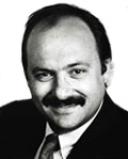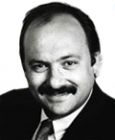Hormones
Sex, Hormones and Identity
Your hormones are more powerful than you think!
Posted August 11, 2010
Amidst the blather and bluster of gender politics too little has been said about very real biological determinants. I shall address these below. My point, which I will get to in possibly a prolix manner is to identify the lack of understanding in the medical and psychological fields of biological/hormonal determinism in the sexuality of patients and that in many cases ambivalence, ambiguity, confusion and change have their roots in biology, not psychology or life experience.
Since the beginning of this century a substantial literature has developed with respect to the effect of hypogonadism in adult men and women. Low testosterone levels in women are known to contribute to loss of libido, inability to climax, depression, cognitive dysfunction, fatigue, sleep problems and many other symptoms. Careful repletion to normal female testosterone levels has a remarkable effect on most of these problems with no side effects. A vast number of men suffer from hypogonadism, or low testosterone levels from middle-age on. This affects energy, libido, sexual function, mood, cognition and many other issues. Repletion to normal mid range male testosterone levels resolves a panoply of problems. The problem is that the problem isn't known, identified and treated more often than not.
Most physicians and therapists don't even know about the above. Many of those who have heard of it really don't know what to do. And many, including capable endocrinologists and gynecologists are reluctant to prescribe androgens to patients with “low normal” hormone levels. They are not familiar with the literature that supports such treatment as quite viable and appropriate. Combine this with the facts that most patients are most reticent to speak of such issues, most physicians and therapists are reluctant to enquire about such issues and many problems fail to reach satisfactory resolution.
Freud wrote with remarkably astute foresight, a long time ago in his “Three Essays on Sexuality” some very important observations and conjectures. He suggested that there were two forms of homosexuals, whom he referred to with no particular offense as Inverts, absolute inverts and relative inverts. He believed that absolute inverts were biologically predetermined to be homosexual and that in all other ways they could mature to full genital sexuality and be otherwise normal adults except for their sexual preference. Relative inverts were less obviously biologically predetermined, potentially “treatable”, and that absolute biological pre-determination was not present. In the same essays he made two very important predictions. One was that at some point in the future he was certain that there would be discovered chemicals in the body involved in sexual development and behavior. This observation foreshadowed the discovery of hormones. He also stated that he could be completely wrong about his conjectures but that it was the best interpretation he could make at the time based upon the information available to him [and within the context of his culture at that time]. While he may have become more entrenched in some of his psychoanalytic theories later on he remained willing to be proven wrong, or right.
Let's not argue about Freud. Let's use these fascinating observations to expand our understanding of sexuality. And let us try to keep clear and distinct biological data from personal and political beliefs.
A female psychiatrist in the San Francisco Bay area published a startling discovery about two years ago based upon her years of clinical research. She asserted that there was a real difference between men and women! This seemed to be a surprise to some people.
I will posit the following: indeed there are some boys and girls who seem to know instinctually or naturally from the earliest recollection of thoughts feelings and desires that they are homosexual. There are also some boys and girls who seem to know early on, or after much confusion and conflict that they were born in the wrong body. Let us accept these two groups as absolute biologically pre-determined. It is another long and complicated discussion to explore genetic predetermination, in utero exposures, age of the mother and so forth. Hence I will defer that discussion.
Hormones rage during puberty. Girls get estrogen and progesterone and a bit of testosterone and transform mysteriously (and to the everlasting consternation and excitement of men) into women. There is a specific subset of girls who have a metabolic disorder called Stein-Leventhal syndrome, otherwise known as polycystic ovarian syndrome (PCOS). Besides having polycystic ovaries these girls have excessive amounts of testosterone and often DHEA. They develop irregular and painful periods but more important to this discussion is that they are masculinized. They become heavily boned, large, usually overweight, have notable acme and are quite hirsute. There is also very good data to indicate a marked incidence of lesbianism in these women. Is it a strange conclusion to reach in the case of a girl bombarded with often masculine levels of testosterone and DHEA from the time of puberty on that there might be a very real effect on the development of sexual identity and desire. Certainly one can accept the argument of psychosocial factors on the development of identity, self-esteem, social interaction and all of these other important issues but at the core level can one deny the effect of masculinization by androgenic gonadal hormones?
As a counterpoint to this know that there is a syndrome called testicular feminization in which genetically male (XY) babies are born with apparently female genitalia and develop physically, emotionally and almost uniformly in terms of sexual identity and desire into women. They have undescended testicles and their bodies are insensitive to testosterone. So the body thinks the testosterone is estrogen and they become a female, feminine woman. By the by, keep in mind as this discussion ensues that in the human body testosterone is broken down into estrogen (estradiol) and that men have estrogen normally as do women have testosterone normally. It is an issue of quantity and balance.
From the purely physical perspective girls undergo a much more dramatic transformation in form than do boys. But from a purely biochemical and neuro- psychoendocrinological perspective boys undergo a more dramatic and probably erratic transformation than girls. Might this have something to do with confusion, experimentation and uncertainty in adolescent males? I think so.
Above I alluded to the legion of patients who had had previously normal and typical lives and relationships until they become clinically hypo-gonadal and things fall apart. The actual incidence of hypogonadism is unknown because of the insufficient number of patients properly evaluated. If a physician, and particularly psychiatrist, or a psychologist or therapist fails to enquire about symptoms then these symptoms do not receive appropriate evaluation, diagnosis and treatment. In my practice many marriages have been saved, careers corrected and lives improved by the identification and treatment of these hormone issues. As a relevant aside the early diagnosis and treatment of Stein-Leventhal syndrome in pre-pubescent pubescent girls can interdict many of the negative consequences in terms of physical and psychological growth and development.
A proper understanding of these issues than leads to an interesting exploration into other problems we encounter in our practice. Might it be that some or many men who lose interest in their wives in middle age and “come out” as gay are in fact responding to the profound influence of unknown and unidentified hormone changes? I have insufficient data to assert this but it remains a viable conjecture. I have seen several men who have identified a difficult puberty and adolescence, some with homosexual urges and/or behaviors, some with the urge to cross dress who lost these thoughts and feelings as they grew into men and led normal heterosexual lives. Yet in middle or late middle age they again began to have the recurrence of homosexual fantasies, the urge to cross dress and so forth. In every case some degree of depression was present as well as diminished cognitive performance and professional function. In every case hypogonadism was diagnosed. And in every case the correction of testosterone levels to upper midrange resolved the confusion and conflict and returned most things to normal other than jobs, fortunes or relationships that had been lost along the way.
I could go on for several thousand more words about these issues. I could discuss the in adequate, improper and foolish treatment–medically and psychotherapeutic we–of many patients and the misinterpretation of symptomatology and treatment response by many professionals and significant others. If there is enough interest in this post I shall do so in future posts. Meanwhile if you are a professional I encourage you to familiarize yourself with the literature pertinent to these matters and have no reluctance to making proper enquiries and referrals. If you are a consumer/patient have no reticence to speak up and to seek thorough examination and when appropriate effective treatment.




